School History: Dunn Loring Elementary School
Remembering Our Past
The following text was adapted from “Dunn Loring Memories, 1978: A History of Dunn Loring School,” a copy of which was found at Stenwood Elementary school.
A School to Be Proud Of
According to the editor of the suburban news of the Washington Evening Star, on December 14, 1937, a census had just been completed and maps prepared of Dunn Loring and Idylwood, Virginia, which showed the location and number of children living in the vicinity. The map indicated there were 158 homes and 151 children under age fourteen within a half-mile radius. The parents were greatly concerned over the lack of a nearby school to serve the children, who traveled daily by rail or by bus to school in Falls Church or Vienna. They wanted a school to be proud of; one right in their own community.
After much lobbying by community members Charles Gotthardt, Thomas Taylor, Prentiss Shreve, Elizabeth Black, John Meyer, Walter Stenhouse, and many others, the School Board had plans drawn up for a two-classroom school. This was less than the citizens wanted, which led to several months of back-and-forth negotiations between community members and the School Board in the spring and summer of 1938.
A letter was presented from Mr. Prentiss A. Shreve, of the Dunn Loring community, suggesting that the proposed new elementary school in this community be named for Captain Franklin Williams, father of Mr. Herbert Williams of the present County School Board, and a Captain in Mosby's Rangers of the Confederate Army. It was the sense of the Board that this name is most acceptable, and that Mr. Shreve be advised that he may proceed to secure further sentiment in this community with reference to the naming of the school in honor of Captain Franklin Williams. ~ Fairfax County School Board Meeting Minutes, September 13, 1938
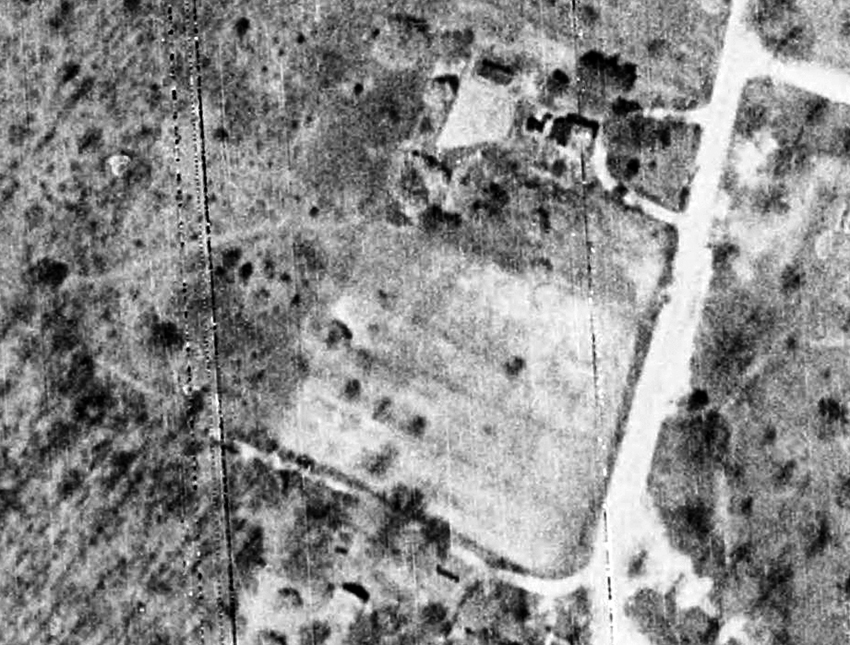
In October 1938, the School Board agreed to build a school at Dunn Loring. The building the Board had in mind would have five-classrooms and an auditorium large enough to seat 250 people. Mr. A. C. Martin, an employee of the Federal government, as well as a community-minded citizen, presented a plan for building the school and spearheaded activities to raise the funds necessary for its construction.
A short time later, the School Board applied for grant funding from the Federal government’s Public Works Administration (PWA) to build eight new schools. The grant application was designated “P.W.A. Docket No. Va. 1058-F, Fairfax County Schools” and included a request for $50,000 to build a school at Dunn Loring. The grant application specified that the money would be used to purchase a school site, drill a well for drinking water, and construct a new brick building with five classrooms, an auditorium, indoor toilets, library, office, central heating plant, and water system.
Acquiring the Land
Mrs. Elizabeth Black, who once lived across the street from Dunn Loring Elementary School, negotiated the sale of the school site to the Fairfax County School Board. The land on which the school was to be located was purchased in November 1938 from Joseph B. Taylor and his wife Lavenia Seals Taylor. A former slave, Joe Taylor died in 1950 at the age of 103. After his death, the remainder of Joe Taylor’s land was sold to the School Board by his daughter, Mildred J. Ball.
You suggested that I write you details of a sort of "gentlemen's agreement" to the effect that during the life of Uncle Joe Taylor or his wife no part of the school site lying within 50 feet of their house would be used for any purpose, but would be fenced off from the school activities so as to preserve the peace of their home site. They asked from the first that nothing be done which in effect would destroy the peace of their old home during their lives. They are gentle old folk who shrink from any unpleasantness. Would you, with the approval of the Board, please write them a letter embracing the above, and send our Association a copy so we can cooperate in complying with its terms? The letter should be addressed to their daughter, Mrs. Mildred J. Ball, R.F.D. # 3, Box 76, Vienna, Virginia. ~ Letter from R. G. Buckelew, President of the Dunn Loring Citizens Association, to FCPS Superintendent W. T. Woodson, September 1938
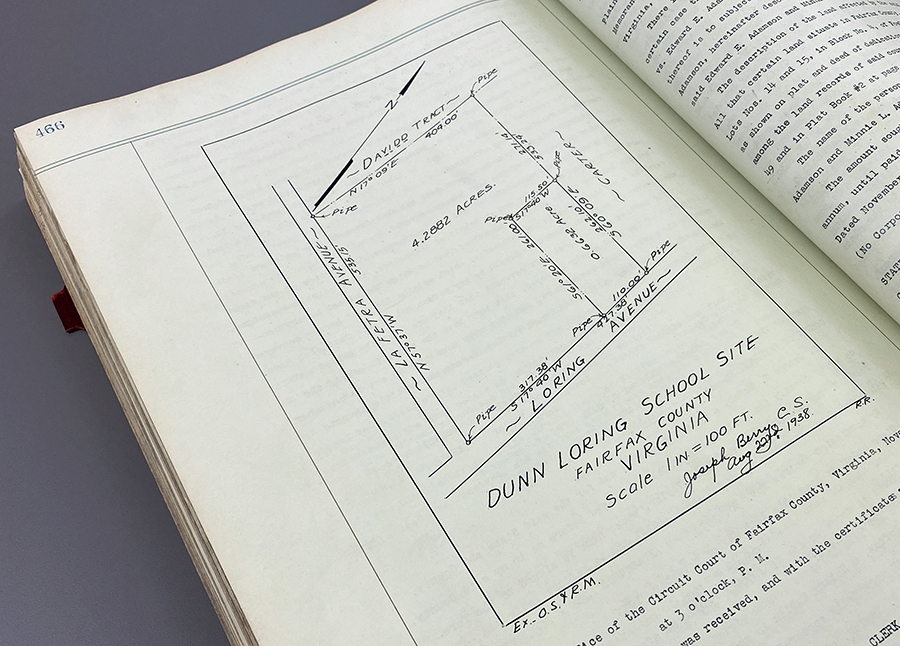
Building Dunn Loring Elementary
On January 5, 1939, preliminary building plans for Dunn Loring Elementary School were approved by the School Board and the State Architect’s Office was directed to complete the final plans. On March 8, 1939, the School Board awarded the contract for the construction of Dunn Loring Elementary to Alvin V. Leake of Richmond, Virginia, in the amount of $41,948. During construction of the building, Alvin Leake boarded with Mrs. Elizabeth Black so he could oversee the workers.
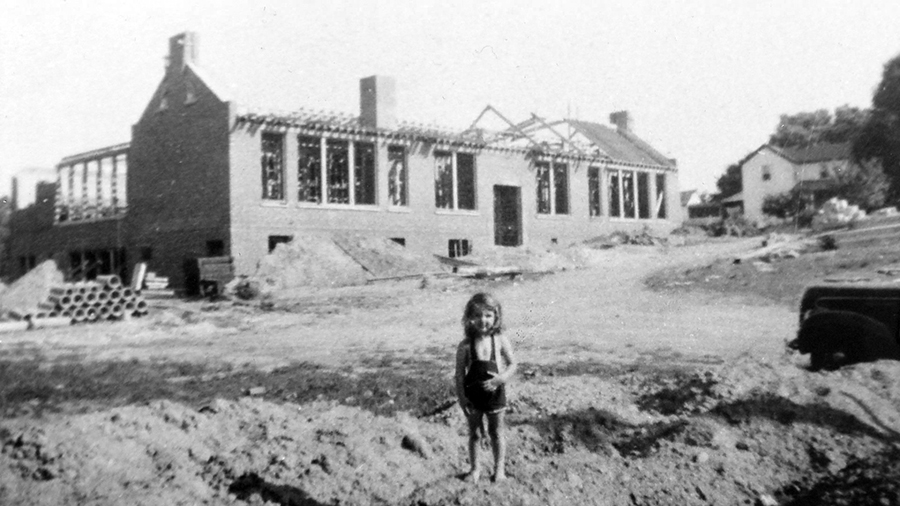
In August 1939, Superintendent Woodson reported to the School Board that it might become necessary to postpone the opening of schools on Thursday, September 7, because Dunn Loring, as well as several other new schools under construction, might not be completed in time for the first day of school. The Board concurred and postponed the opening of schools by two weeks.
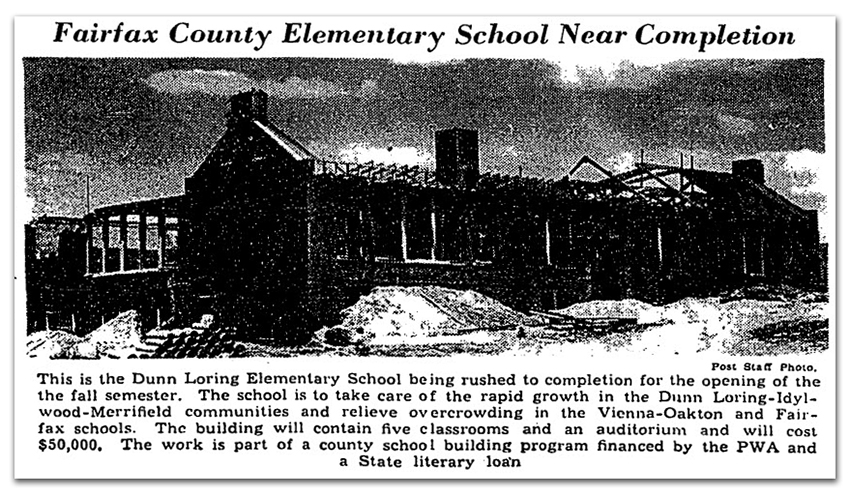
The First Day of School
Dunn Loring Elementary School opened its doors to students for the first time on September 21, 1939. Superintendent Woodson reported to the School Board six days later that 260 pupils had reported at Dunn Loring on opening day, far more than had been expected. Woodson stated further that he was able to transfer some of the students to the schools at Oakton and Vienna, thereby decreasing enrollment at Dunn Loring to a manageable 188.
At first, Dunn Loring’s teachers had no chairs or desks. The school also lacked a bell. Mrs. Black had a bell that had been passed down through her family from her grandmother, a former teacher. She loaned it to Principal Andrea Hawley, who, in keeping with historic tradition, rang it on the first day to welcome students to their new school. In addition to her duties as principal, Mrs. Hawley also taught the fifth-grade class.
The school was formally given the name Dunn Loring Elementary School by the School Board at its meeting on October 3, 1939, and the building was dedicated ten days later. Alfred F. Beiter, Special Assistant to the Commissioner of the PWA, delivered the keynote address at the dedication.
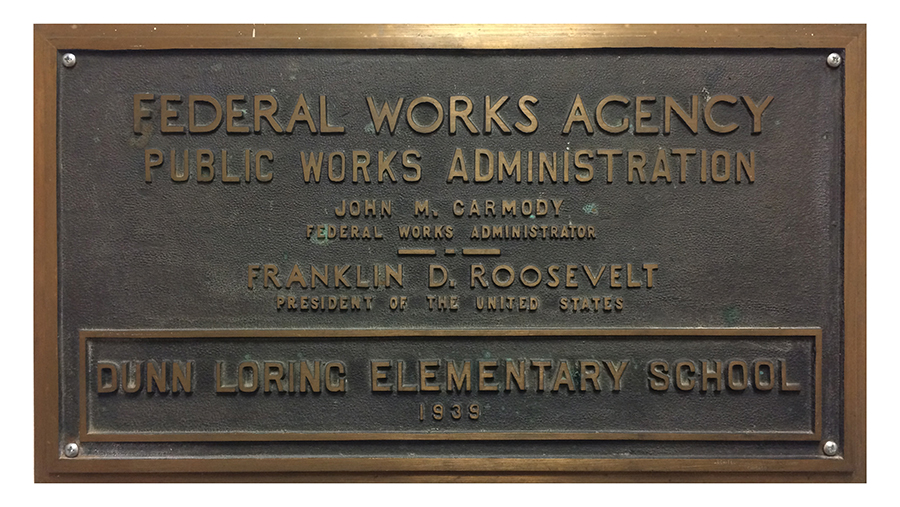
A Sea of Mud
When Dunn Loring was built, the school grounds were graded ten feet around the school, but the rest of the property was described as “a sea of mud” by parents. The school’s custodian was very disturbed about the constant tracking of mud into the building and stated it would be impossible to keep the school clean without landscaping and sodding the grounds. To that end, Mrs. Black donated two tons of manure, and the Hawes, Stenhouses, and Shreves gave shrubs and grass seed. Mr. Byrne, another neighbor, spent a week grading and seeding the grounds and planting the shrubs. Parents made benches and chairs and constructed a circular driveway in front of the school.
At first, the school’s kitchen had no sink or stove. Parents took turns taking large kettles of soup to the school so that the children could have hot lunches. The PTA, of which Mr. Buckelew was also president, raised money to buy a stove and bought $15.00 worth of pots and pans at Sears & Roebuck for the school’s kitchen. The parents also took up a collection in the neighborhood to supply kitchen towels and silverware. Toilet paper and soap for school use were also donated by community members.
The Challenges of Growth
In the early 1940s, rapid population growth in the surrounding community led to significant overcrowding at Dunn Loring Elementary School. A member of the School Board was quoted as saying, “The people seem to be coming out of the bushes.” A two-classroom addition was constructed in the fall of 1940, and another two-room addition was constructed in 1944. Continued overcrowding led to the use of the auditorium for classroom space.
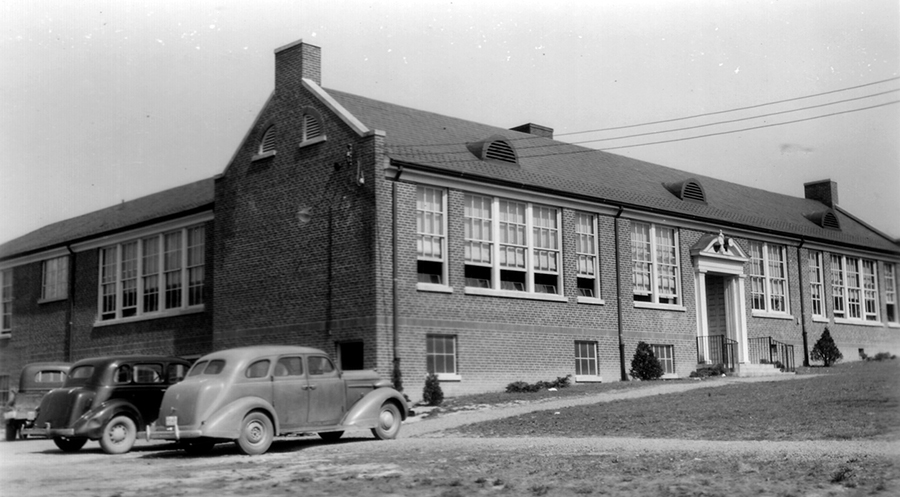
In October 1940, the school yard was leveled to create a playground. The first swing set was built for $18.00 by volunteers from the Manassas Trade Company with materials purchased from Arlington Iron Works. Later that fall, parents, in partnership with two workers from the Works Progress Administration (WPA), began providing hot lunches every day for ten cents. Dessert was five cents extra and a bowl of soup cost four cents.
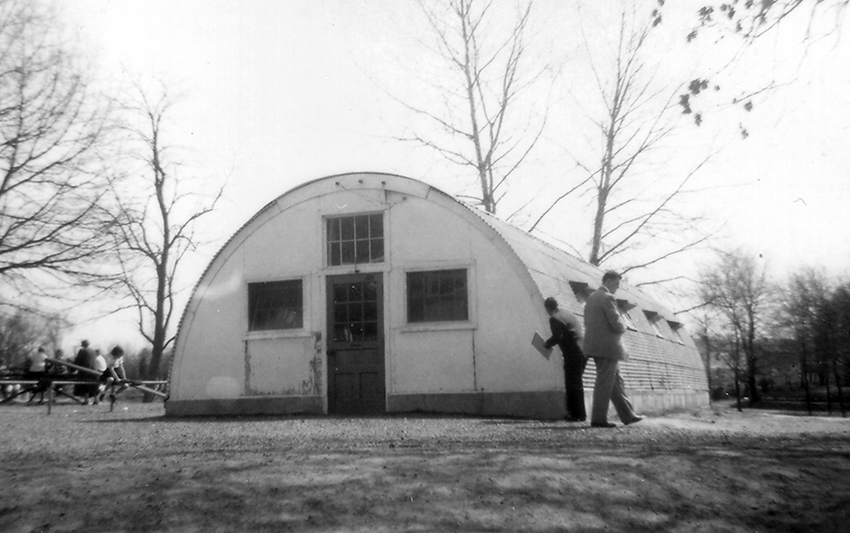
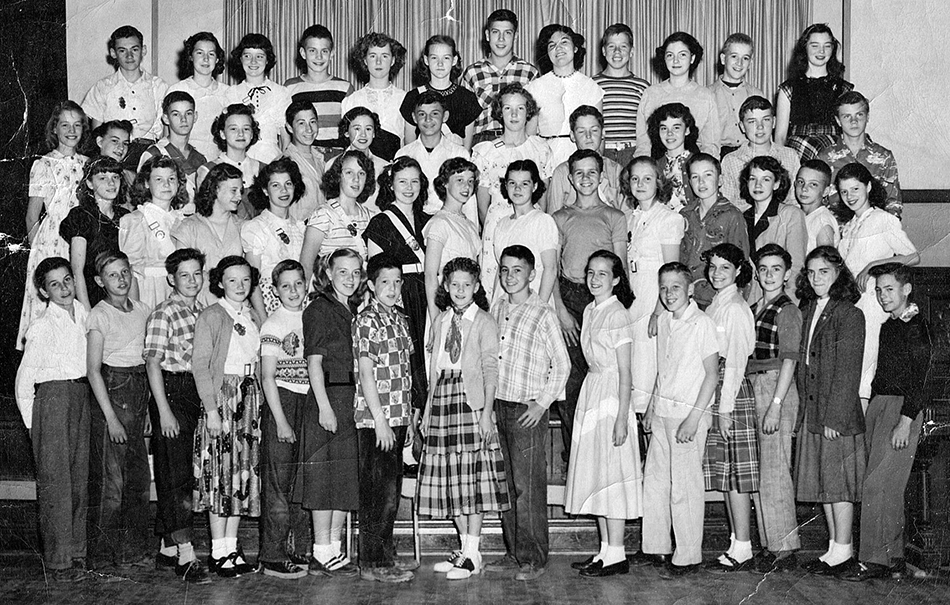
In August 1951, the School Board authorized the acquisition of additional land to expand the size of the school lot at Dunn Loring to approximately ten acres. Once the land had been acquired, plans proceeded for an addition to the school, which was constructed in 1952 by Burroughs & Preston, Inc. From 1950 to 1956, FCPS opened three elementary schools to relieve overcrowding at Dunn Loring, namely Freedom Hill, Pimmit Hills, and Lemon Road. Further relief came in 1964 with the opening of Stenwood Elementary School.
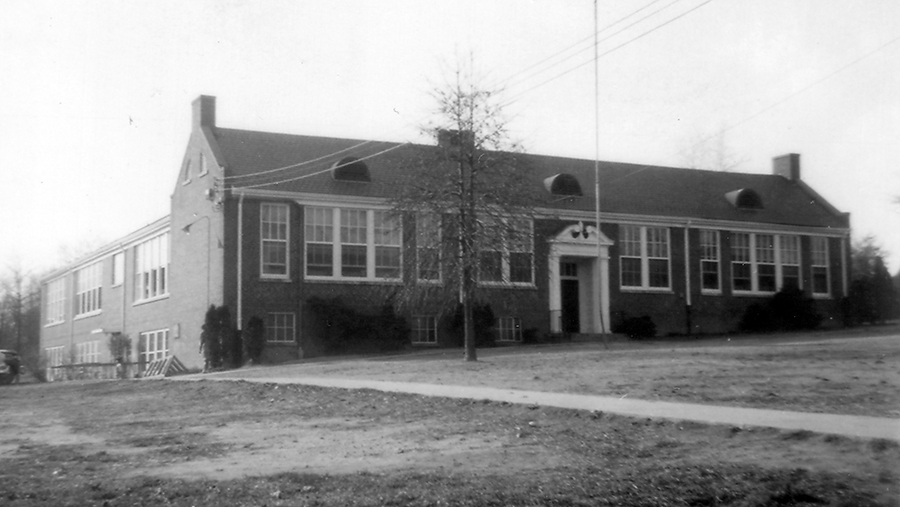
Desegregating Dunn Loring
In 1954, the Supreme Court case Brown v. Board of Education declared that laws creating separate public schools for white and Black children were unconstitutional. In response, Virginia entered a period of massive resistance to school desegregation. In September 1960, Judge Albert V. Bryan ordered Fairfax County Public Schools to begin admitting Black students into white schools closer to their homes. The desegregation process proceeded slowly over a six-year period. Dunn Loring received students who had formerly been assigned to the all-Black Louise Archer Elementary School.
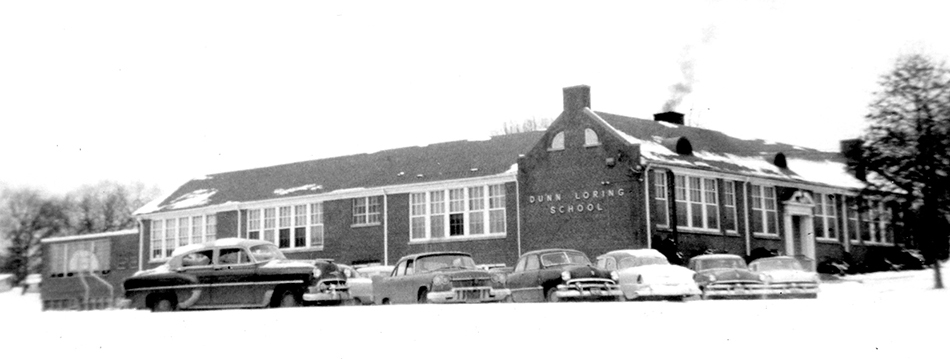
Also in 1960, Dunn Loring Elementary School lost its seventh-grade classes when FCPS opened its first intermediate schools. Dunn Loring operated with grades 1-6 until 1968, when kindergarten classes were introduced in all FCPS elementary schools.
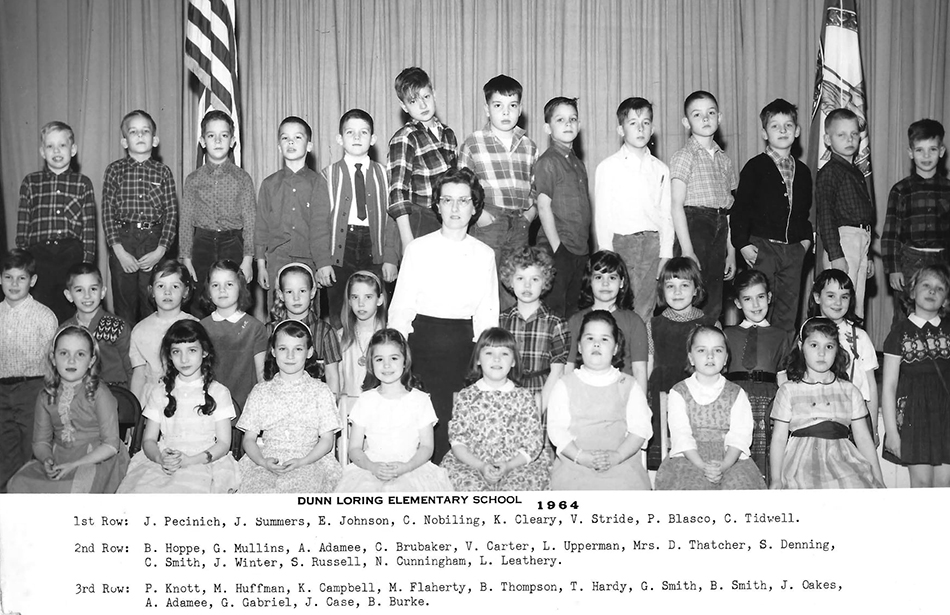
By the early 1970s, Dunn Loring Elementary School was beginning to show its age. Bill Anderson, president of the Dunn Loring Elementary School PTA, expressed his concerns to the School Board in November 1971.
Mr. Anderson said that very little had been done to the school since it was constructed. The wooden floors squeak and crack and make a lot of noise. Most of the 30-35 member classes meet in small rooms; the heating system is not adequate; there is no physical education program; the lunchroom is the oldest in the county and most of its equipment came with the building. Mr. Anderson said this is a small-community school with a wonderful faculty. The PTA has provided some $1,500 to $1,700 per year for books and equipment and feel it is time for the school to be updated. ~ Fairfax County School Board Meeting Minutes, November 4, 1971
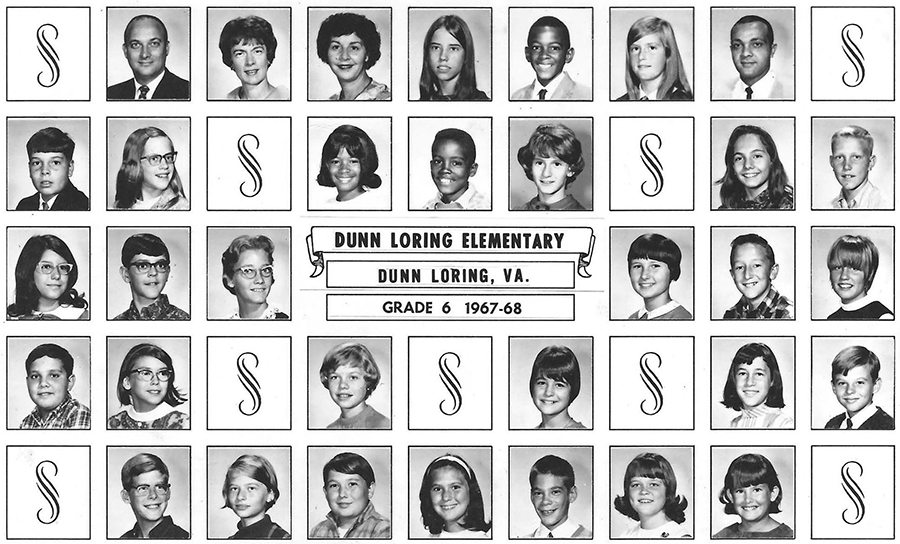
In 1975, the School Board approved upgrades to Dunn Loring’s HVAC, plumbing, and electrical systems, and two classrooms were modified to serve as a physical education facility. However, Dunn Loring was faced with another problem – declining enrollment.
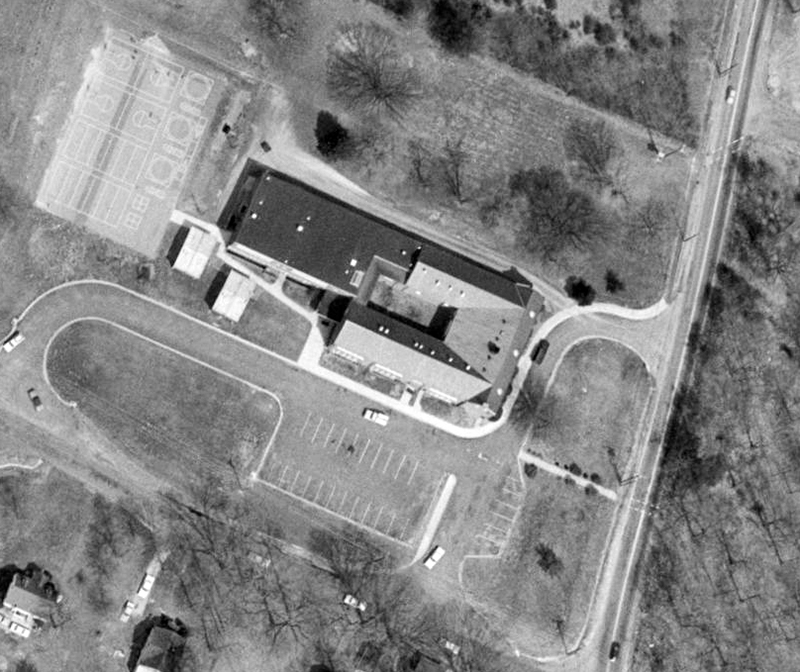
Dunn Loring Closes
During the 1970s, schools that had seen rapid growth during the post-World War II baby boom were suddenly faced with an abundance of empty classrooms. The following enrollment data for Dunn Loring Elementary School was taken from a report prepared by FCPS staff. The report stated that Dunn Loring was rated for a capacity of 390 students.
| School Year | Opening Enrollment |
|---|---|
| 1968-69 | 395 |
| 1969-70 | 378 |
| 1970-71 | 426 |
| 1971-72 | 360 |
| 1972-73 | 305 |
| 1973-74 | 262 |
| 1974-75 | 277 |
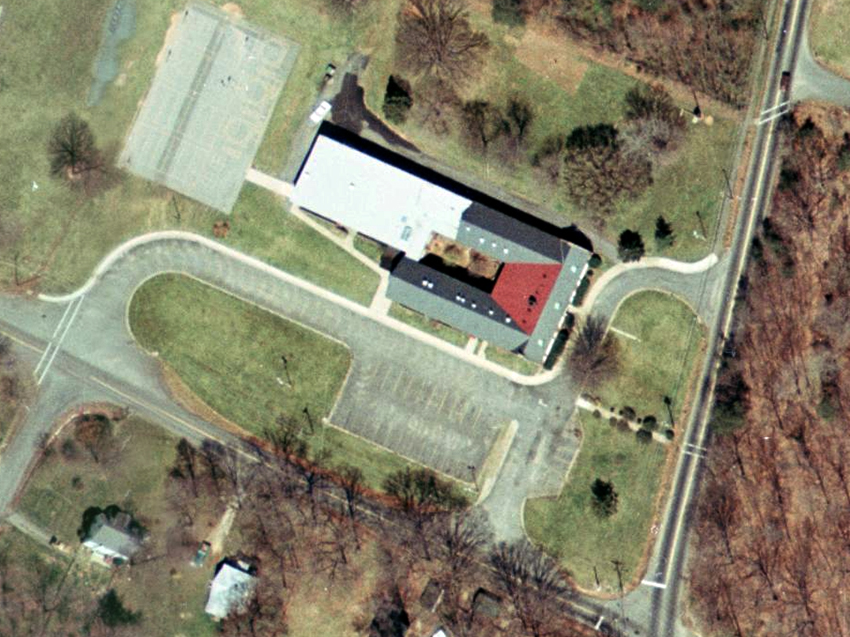
In December 1977, Dr. Margaret Ford, Area III Superintendent, stated the projected enrollment at Dunn Loring for the 1978-79 school year was 184 students. In March 1978, the School Board voted to close Dunn Loring Elementary permanently at the end of the school year in June and reassign its students to Stenwood Elementary School.
154 children from the Dunn Loring area will board buses headed for Stenwood school next year, as a result of the Fairfax County School Board’s decision to close the school they now attend. The School Board voted unanimously Thursday to close Dunn Loring Elementary and transfer all its students to Stenwood. The Board cited declining enrollment at Dunn Loring and the high costs of keeping the school open. ~ Northern Virginia Sun, March 1978
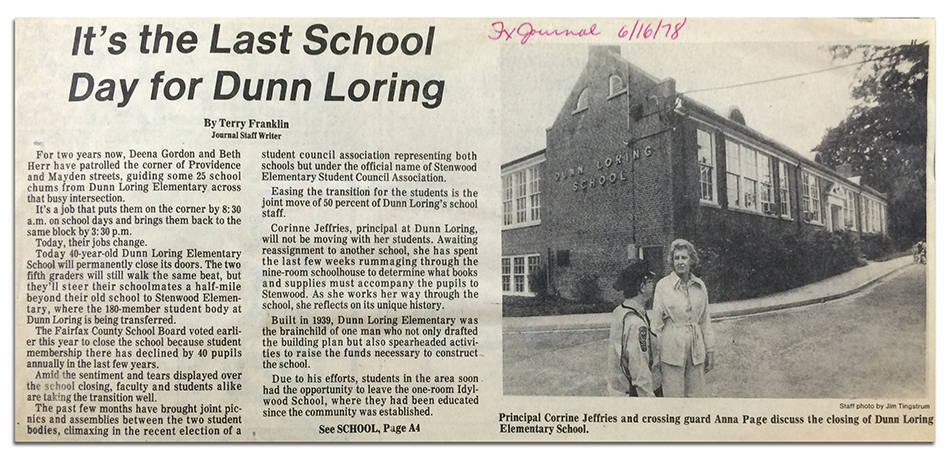
After Dunn Loring Elementary School closed, considerable debate took place about the future of the building. From 1986 to 1988, the School Board leased the property to the Islamic Saudi Academy. After the lease expired, the building was repurposed as the FCPS Area III administrative office. At the time of this writing, the Dunn Loring Administrative Center houses the school system’s Parent Resource Center, a student registration center, and an Early Childhood Child Find assessment site. In January 2021, the Fairfax County School Board approved a plan to convert the Dunn Loring Center back into an elementary school to relieve overcrowding at nearby Shrevewood Elementary School.
The Principals
The principals of Dunn Loring Elementary School were Andrea Hawley (1939-1944), Viola S. Dillon (1944-1954), George V. Bernard (1954-1955), Herman B. Lloyd (1955-1958), William B. Martin (1958-1963), Virginia H. Austin (1963-1964), Mary L. Musick (1964-1966), Richard W. Byrd (1966-1972), George P. Coussoulos (1972-1976), Corrine F. Jeffries (1976-1978).
What’s in a Name?
How did the community of Dunn Loring get its name? Find out in this video produced for FCPS cable television channel Red Apple 21.
